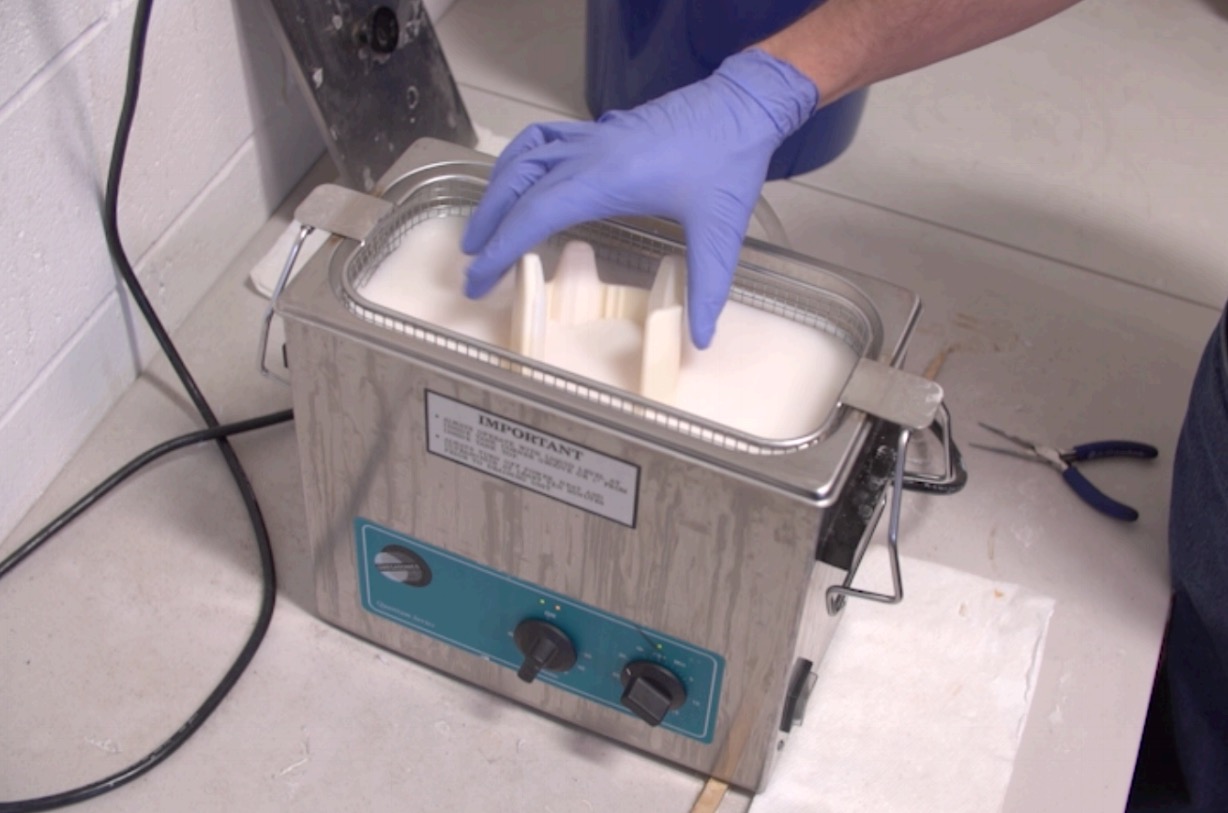
Rize3D has published a report detailing the often forgotten costs associated with 3D printing that occur AFTER the print is complete.
The report, sponsored by Rize3D and written by Fabbaloo friend Todd Grimm, is entitled, “3D Printing: The Impact of Post-Processing”. I believe this publication is quite timely, as post-processing requirements are often a big surprise to those entering the 3D print world. A very big surprise.
Contrary to popular belief, 3D prints are usually not “done” when they come off the 3D printer. They almost always require some post-processing, and by that I don’t mean painting or plating: the print itself must be processed to achieve the “final” state desired when you sent the 3D model to the printer.
Grimm explains the problem:
Post-processing is a non-valued-added operation that increases overhead and imposes limits. It complicates the 3D printing workflow, adds expense and extends delivery time. For the 3D printing lab where operations are centralized and run by a dedicated staff, this is undesirable. For office-environment operations, it is unacceptable, making it a technology that is best suited for the lab rather than being a hands-on convenience for engineers and designers.
But what is post-processing? Some may think it involves trimming off a few excess bits of plastic, but there’s often far more than that. Again, Grimm lists the possible post-processing activities for a number of 3D printing processes:
- Remove support structures. (manual, serial)
- Light sanding to remove support structure remnants. (manual, serial)
- Gross support removal. (manual, serial)
- Soak to dissolve supports. (automated, batch)
- Pick out/cut off any undissolved remnants. (manual, serial)
- Rinse and dry. (manual, serial)
- Gross removal of supports. (manual, serial)
- Soak to remove residual resin. (automated, batch)
- Cure in an ultraviolet (UV) oven. (automated, batch)
- Remove remaining support structures. (manual, serial)
- Light sanding to remove surface imperfections. (manual, serial)
- And as new 3D printing techniques emerge, we may see even more activities added to this list.
Why is this such a big deal? There’s two key reasons.
First, almost all of these post-processing activities are performed manually. This means they are typically slow, inconsistent and expensive, all not good properties.
The second reason is that in many cases, 3D printers are in a work setting where they may be running as much as possible, even 24 hours a day. For an operation with such throughput, you will have a correspondingly great deal of manual effort for post-processing. This raises costs significantly, especially if you must establish shifts of workers (with associated supervision and administrative costs) to handle the workload. If your workload is seasonal or intermittent, you may be forced to use outsourced labor at even higher rates.
Grimm estimates this cost at between USD$25-50K per year per 3D printer! Now consider an operation with, say, 20 3D printers and you get the picture.
This situation will persist as long as post processing is not automated, and the sad news is that few 3D printer vendors are working on this aspect. One exception is newcomer Rize3D, whose 3D printer includes a means of automatically removing support structures, eliminating part of the problem. Note, however, that they happen to be the sponsors of Grimm’s report.
One angle I haven’t seen much work in yet is standalone 3D print finishing devices. Most often you’ll see an acetone-style smoother or a standard industrial tumbler, but most often these devices are “borrowed” from other industries rather than specially made for 3D prints. Could this be an opportunity for entrepreneurs?
Meanwhile, please read the very informative report from Mr. Grimm.
Via Rize3D (PDF)

